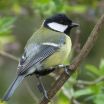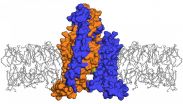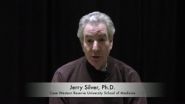INFORMATION:
Lethal control of wolves backfires on livestock
WSU researchers find shooting carnivore leads to more dead sheep and cattle
2014-12-03
(Press-News.org) PULLMAN, Wash.--Washington State University researchers have found that it is counter-productive to kill wolves to keep them from preying on livestock. Shooting and trapping lead to more dead sheep and cattle the following year, not fewer.
Writing in the journal PLOS ONE, WSU wildlife biologist Rob Wielgus and data analyst Kaylie Peebles say that, for each wolf killed, the odds of more livestock depredations increase significantly.
The trend continues until 25 percent of the wolves in an area are killed. Ranchers and wildlife managers then see a "standing wave of livestock depredations," said Wielgus.
Moreover, he and Peebles write, that rate of wolf mortality "is unsustainable and cannot be carried out indefinitely if federal relisting of wolves is to be avoided."
The gray wolf was federally listed as endangered in 1974. During much of its recovery in the northern Rocky Mountains, government predator control efforts have been used to keep wolves from attacking sheep and livestock. With wolves delisted in 2012, sport hunting has also been used. But until now, the effectiveness of lethal control has been what Wielgus and Peebles call a "widely accepted, but untested, hypothesis."
Their study is the largest of its kind, analyzing 25 years of lethal control data from U.S. Fish and Wildlife Services Interagency Annual Wolf Reports in Montana, Wyoming and Idaho. They found that killing one wolf increases the odds of depredations 4 percent for sheep and 5 to 6 percent for cattle the following year. If 20 wolves are killed, livestock deaths double.
Work reported in PLOS ONE last year by Peebles, Wielgus and other WSU colleagues found that lethal controls of cougars also backfire, disrupting their populations so much that younger, less disciplined cougars attack more livestock.
Still, Wielgus did not expect to see the same result with wolves.
"I had no idea what the results were going to be, positive or negative," he said. "I said, 'Let's take a look at it and see what happened.' I was surprised that there was a big effect."
Wielgus said the wolf killings likely disrupt the social cohesion of the pack. While an intact breeding pair will keep young offspring from mating, disruption can set sexually mature wolves free to breed, leading to an increase in breeding pairs. As they have pups, they become bound to one place and can't hunt deer and elk as freely. Occasionally, they turn to livestock.
Under Washington state's wolf management plan, wolves will be a protected species until there are 15 breeding pairs for three years. Depredations and lethal controls, legal and otherwise, are one of the biggest hurdles to that happening.
Wolves from the Huckleberry Pack killed more than 30 sheep in Stevens County, Wash., this summer, prompting state wildlife officials to authorize killing up to four wolves. An aerial gunner ended up killing the pack's alpha female. A second alpha female, from the Teanaway pack near Ellensburg, Wash., was illegally shot and killed in October.
That left three breeding pairs in the state.
As it is, said Wielgus, a small percentage of livestock deaths are from wolves. According to the management plan, they account for between .1 percent and .6 percent of all livestock deaths--a minor threat compared to other predators, disease, accidents and the dangers of calving.
In an ongoing study of non-lethal wolf control, Wielgus's Large Carnivore Lab this summer monitored 300 radio-tagged sheep and cattle in Eastern Washington wolf country. None were killed by wolves.
Still, there will be some depredations, he said. He encourages more non-lethal interventions like guard dogs, "range riders" on horseback, flags, spotlights and "risk maps" that discourage grazing animals in hard-to-protect, wolf-rich areas.
"The only way you're going to completely eliminate livestock depredations is to get rid of all the wolves," Wielgus said, "and society has told us that that's not going to happen."
ELSE PRESS RELEASES FROM THIS DATE:
Koalas selective about eucalyptus leaves at mealtime
2014-12-03
Koala population distribution may be influenced by eucalyptus leaf toxin and nutrient content, especially in areas with low-quality food options, according to a study published December 3, 2014 in the open-access journal PLOS ONE by Eleanor Stalenberg from The Australian National University and colleagues.
Scientists suspect that access to nutritious food plays a role in herbivore distribution and abundance, but there is still some debate over how variation in plant nutritional qualities may influence population distribution. Koalas predominantly eat eucalyptus leaves ...
Arabian Sea humpback whale population may have been isolated for about 70,000 years
2014-12-03
A population of humpback whales that resides in the Arabian Sea may have been isolated for ~70,000 years, according to a study published December 3, 2014 in the open-access journal PLOS ONE by Cristina Pomilla, Ana Rita Amaral, Howard Rosenbaum, and Tim Collins of the Wildlife Conservation Society, the American Museum of Natural History, and their colleagues.
The small, non-migratory population of Arabian Sea humpback whales is currently classified as "Endangered" on the IUCN Red List of Threatened Species. Scientists have limited data on the difficult-to-study population, ...
Scientists concerned that culture of research can hinder scientific endeavor
2014-12-03
Aspects of the culture of research in UK higher education institutions (HEIs) can encourage poor research practices and hinder the production of high quality science, according to scientists who took part in a project exploring the ethical consequences of the culture of research led by the Nuffield Council on Bioethics.
The findings of the project, which included a survey of almost 1000 scientists and others, suggest that scientists are motivated in their work to find out more about the world and benefit society, and that they believe collaboration, multidisciplinarity, ...
Birds conform to local 'traditions'
2014-12-03
Birds learn new foraging techniques by observing others in their social network, 'copycat' behaviour that can sustain foraging 'traditions' that last years, according to a study of how innovations spread and persist in wild great tits (Parus major).
The study involved experiments with eight local populations of great tits in Wytham Woods, Oxfordshire (UK). In five of the populations two male birds were trained to slide a puzzle box door either to the left or to the right. In three control groups two males were captured but not trained. The birds were then released back ...
Atomic-level view provides new insight into translation of touch into nerve signals
2014-12-03
Whether stubbing a toe or stroking a cat, the sensation of touch starts out as a mechanical force that is then transformed into an electrical signal conveying pain or other sensations. Tiny channels in neurons act as translators by helping to formulate that signal to the brain. However, scientists know little about the fine details of how these channels work.
New work at Rockefeller University has revealed that one such channel in humans responds to mechanical force using a never-before-seen mechanism. Researchers led by Roderick MacKinnon, John D. Rockefeller Jr. Professor ...
World's fastest 2-D camera may enable new scientific discoveries
2014-12-03
A team of biomedical engineers at Washington University in St. Louis, led by Lihong Wang, PhD, the Gene K. Beare Distinguished Professor of Biomedical Engineering, has developed the world's fastest receive-only 2-D camera, a device that can capture events up to 100 billion frames per second.
That's orders of magnitude faster than any current receive-only ultrafast imaging techniques, which are limited by on-chip storage and electronic readout speed to operations of about 10 million frames per second.
Using the Washington University technique, called compressed ultrafast ...
Barrier-breaking drug may lead to spinal cord injury treatments
2014-12-03
VIDEO:
NIH-funded scientists developed a promising new drug that may lead to spinal cord injury treatments.
Click here for more information.
Injections of a new drug may partially relieve paralyzing spinal cord injuries, based on indications from a study in rats, which was partly funded by the National Institutes of Health
The results demonstrate how fundamental laboratory research may lead to new therapies.
"We're very excited at the possibility that millions of people ...
Peptide shows great promise for treating spinal cord injury
2014-12-03
Case Western Reserve scientists have developed a new chemical compound that shows extraordinary promise in restoring function lost to spinal cord injury. The compound, which the researchers dubbed intracellular sigma peptide (ISP), allowed paralyzed muscles to activate in more than 80 percent of the animals tested. The remarkable study, partly funded by the National Institutes of Health, appears in the December 3 edition of the journal Nature.
Case Western Reserve University School of Medicine Professor of Neurosciences Jerry Silver, PhD, the senior author, led an international ...
3-D compass in the brain
2014-12-03
Pilots are trained to guard against vertigo: a sudden loss of the sense of vertical direction that renders them unable to tell "up" from "down" and sometimes even leads to crashes. Coming up out of a subway station can produce similar confusion: For a few moments, you are unsure which way to go, until regaining your sense of direction. In both cases, the disorientation is thought to be caused by a temporary malfunction of a brain circuit that operates as a three-dimensional (3D) compass.
Weizmann Institute scientists have now for the first time demonstrated the existence ...
Protect the world's deltas
2014-12-03
Extensive areas of the world's deltas -- which accommodate major cities such as Shanghai, Dhaka and Bangkok -- will be drowned in the next century by rising sea levels, according to a Comment piece in this week's Nature. In the article, Dr. Liviu Giosan, a geologist with the Woods Hole Oceanographic Institution (WHOI), and colleagues call for maintenance efforts to be started now to avert the loss of vast expanses of coastline, and the consequent losses of ecological services, economic and social crises, and large-scale migrations.
Problems start upstream: deltas are built ...
LAST 30 PRESS RELEASES:
Tracing the quick synthesis of an industrially important catalyst
New software sheds light on cancer’s hidden genetic networks
UT Health San Antonio awarded $3 million in CPRIT grants to bolster cancer research and prevention efforts in South Texas
Third symposium spotlights global challenge of new contaminants in China’s fight against pollution
From straw to soil harmony: International team reveals how biochar supercharges carbon-smart farming
Myeloma: How AI is redrawing the map of cancer care
Manhattan E. Charurat, Ph.D., MHS invested as the Homer and Martha Gudelsky Distinguished Professor in Medicine at the University of Maryland School of Medicine
Insilico Medicine’s Pharma.AI Q4 Winter Launch Recap: Revolutionizing drug discovery with cutting-edge AI innovations, accelerating the path to pharmaceutical superintelligence
Nanoplastics have diet-dependent impacts on digestive system health
Brain neuron death occurs throughout life and increases with age, a natural human protein drug may halt neuron death in Alzheimer’s disease
SPIE and CLP announce the recipients of the 2025 Advanced Photonics Young Innovator Award
Lessons from the Caldor Fire’s Christmas Valley ‘Miracle’
Ant societies rose by trading individual protection for collective power
Research reveals how ancient viral DNA shapes early embryonic development
A molecular gatekeeper that controls protein synthesis
New ‘cloaking device’ concept to shield sensitive tech from magnetic fields
Researchers show impact of mountain building and climate change on alpine biodiversity
Study models the transition from Neanderthals to modern humans in Europe
University of Phoenix College of Doctoral Studies releases white paper on AI-driven skilling to reduce burnout and restore worker autonomy
AIs fail at the game of visual “telephone”
The levers for a sustainable food system
Potential changes in US homelessness by ending federal support for housing first programs
Vulnerability of large language models to prompt injection when providing medical advice
Researchers develop new system for high-energy-density, long-life, multi-electron transfer bromine-based flow batteries
Ending federal support for housing first programs could increase U.S. homelessness by 5% in one year, new JAMA study finds
New research uncovers molecular ‘safety switch’ shielding cancers from immune attack
Bacteria resisting viral infection can still sink carbon to ocean floor
Younger biological age may increase depression risk in older women during COVID-19
Bharat Innovates 2026 National Basecamp Showcases India’s Most Promising Deep-Tech Ventures
Here’s what determines whether your income level rises or falls
[Press-News.org] Lethal control of wolves backfires on livestockWSU researchers find shooting carnivore leads to more dead sheep and cattle





